Without a doubt, fabric grow bags are dependable if you’re trying to grow healthy fruits and vegetables – or even flowers, if you want to add pretty colors – in your garden. Besides being versatile, grow bags provide gardeners with limited spaces with an opportunity to grow the biggest amounts possible within the limits of their space.
However, there are several things you need to know about grow bags before you start growing plants in them. What follows is a full guide that covers everything about grow bags – their types, proper use, and everything in between!
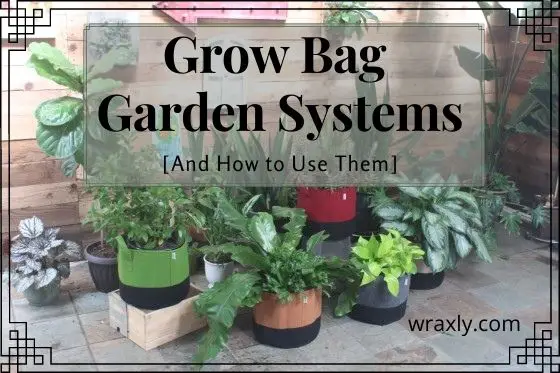
Table des matières
Pressé? Voici nos meilleurs choix…
| Image | Titre | Prime | Acheter |
|---|---|---|---|
 Haut
Haut
Haut
Haut
Haut
Haut
Haut
Haut | Gardzen Lot de 10 sacs de culture de 5 gallons, pots en tissu d'aération avec poignées | PrimeAdmissible | Vérifier le prix sur Amazon |
Haut | Sacs de culture en tissu Wraxly - Pots de fleurs bicolores colorés de 7 gallons. Meilleur cadeau de jardinage pour les amoureux des plantes ! [Lot de 5 couleurs assorties - Plus un sac bonus noir !] | PrimeAdmissible | Vérifiez mon prix sur Amazon |
 Haut
Haut
Haut
Haut
Haut
Haut
Haut
Haut | VIVOSUN Lot de 10 sacs de culture de 15 gallons, pot en tissu renforcé pour jardinage | PrimeAdmissible | Vérifier le prix sur Amazon |
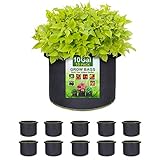 Haut
Haut
Haut
Haut
Haut
Haut
Haut
Haut | SunArea Lot de 10 sacs de culture de 10 gallons, pots en tissu non tissé épais avec poignées renforcées, sac de culture robuste pour jardinage | PrimeAdmissible | Vérifier le prix sur Amazon |
 Haut
Haut | VIVOSUN Lot de 5 sacs de culture de plantes de 20 gallons, pots en tissu non tissé épais épais avec poignées | PrimeAdmissible | Vérifier le prix sur Amazon |
 Haut
Haut | JERIA Lot de 12 sacs de culture de légumes/fleurs/plantes de 5 gallons, pots en tissu d'aération avec poignées (noir), livrés avec 12 étiquettes de plantes | PrimeAdmissible | Vérifier le prix sur Amazon |
Grow Bag Types
Before starting to use grow bags, you should know that they come in different shapes, sizes, and materials, designed for different crops.
For example, although you can grow tomatoes and other similar plants in most grow bags, some are specifically designed with different materials and styles to suit the needs of particular crops, like those designed for potatoes or mushrooms.
Potato Grow Bags
Growing potatoes in traditional ways is rather easy, but the problem with this is that they can often take up too much space because some of the best ways to grow them, such as hilling, require a lot of space.
There are several things about potato grow bags that make them the best for growing potatoes. One of the main benefits is that they provide the amount of dirt that the roots need to spread out and keep the potatoes in one place. While you can grow potatoes in any type of grow bag, there are several potato-specific grow bags that make your life easier. These bags come with doors that open on the side, making it easier for you to reach in and grab your potatoes when they’re ready to be harvested.
Mushroom Grow Bags
It’s always fun to faire pousser des champignons, and one of the greatest ways to grow them is in grow bags designed specifically for them.
These bags make the process of faire pousser des champignons so much easier. In fact, many of them even feature injector ports through which you can add grain or any nutrients that are essential to your mushrooms’ growth.
These grow bags are made of different types of materials to make them suitable specifically for growing mushrooms. However, like potatoes, mushrooms can be grown in any kind of grow bag available.
What Size Grow Bag Should You Get?
Grow bags come in a variety of sizes ( ranging from 5 to 150 gallons). It’s best to select the appropriate grow bag size based on your specific gardening needs.
- A 3-gallon grow bag will work great if you’re growing one single plant or a couple of plants like peppers, peas, or laitue.
- UN Sac de culture de 5 gallons is fine for growing almost anything, especially tomatoes, but potatoes, peppers, herbs, small fruiting trees, and flowers, can also grow perfectly well in these grow bags.
- A 10-gallon grow bag is fairly large and can accommodate an entire garden. You can comfortably faire pousser des tomates or potatoes with basil or other herbs around them if you want to.
- In addition, if properly stored during the off-season, grow bags will last longer than plastic pots or any other container. And that’s not to mention that growing bags are more eco-friendly!
- The 100-150 gallon grow bags are also a good option if you want a bigger planting space, like a large flower bed, for example. This allows you to grow a very large number of plants in only one grow bag.
The Correct Way to Use A Grow Bag
A grow bag works well with tomatoes. After all, they were originally designed to grow them. When a lot of tomato planting enthusiasts in the 1970s got tired of replacing the soil every year around the borders of their greenhouse, they decided to grow their tomatoes in bags instead! However, you can grow a variety of things in your grow bag. For example, lettuce, courgettes, green beans, and kohlrabi will all grow well in a grow bag.
Short-rooted crops like potatoes, oignons de printemps, radishes, and stump-rooted carrots do well in grow bags, too. In fact, you can also make a herb garden using a grow bag. If you’re not really into growing crops, however, you can just grow beautiful flowers!
Growing plants in a grow bag is a very different process from growing them in other containers. The compost used in these bags is intended to do its job without drainage holes at the bottom. And because there are no drainage holes in the bottom, you need to be careful not to end up with some mushy mess,
There are a few easy-to-find things you need in order to start with your own grow bag:
- Grow bag
- Sol
- Engrais
- Seeds or Plants
- Eau
- A sunny location
Start by filling your bag with enough soil, leaving a couple of inches empty for the water to be percolated down the soil to the roots. To get everything ready for the plants, mix your soil with fertilizer. Now that everything is set up, it’s finally time to sow the seeds and grow the plants. Generally, your plants need fertilizing every 4-6 weeks for them to receive the nutrients they need.
Watering Grow Bags
A challenge faced by many grow bag gardeners is watering. Too little water makes their plants dry out, while overwatering makes them develop fungi and molds.
Because of the increased drainage and aeration in fabric bags, overwatering your plants in a grow bag is less of a problem than it is in traditional pots. To put it simply, grow bags are hard to overwater because they are porous, but they’re more prone to drying out than pots because of that same reason. While pots don’t need to be watered as much, they can easily be overwatered.
Drip Systems
Installing a drip watering system can give your grow bag a continuous supply of water. Pipe drip systems are a good option if you want to set up this sort of watering system.
Self-Watering Systems
Another good option for watering is a self-watering system, and it is fairly easy to set up. Just place a container full of water underneath your grow bag, but be careful not to make it too deep, as you want the plant’s roots to be mostly in the air.
A good option container that you can make at home for self-watering is styrofoam in whatever shape you like, lined with plastic. But really, you can use anything as a container, even your bathtub, as long as it’s not too deep!
Fertilisation
With grow bags, you’re going to need more fertilization than you would with in-ground or raised beds since grow bags don’t contain as much soil. It’s recommended to use natural fertilizers frequently with heavy feeder crops.
| Image | Titre | Prime | Acheter |
|---|---|---|---|
 Haut
Haut | Engrais liquide purifié pour plantes d'intérieur | Concentré 20 oz | Donne 50 gallons | Engrais liquide tout usage pour plantes d'intérieur en pot | Tout naturel | Sans danger pour les eaux souterraines | Facile à utiliser | Fabriqué aux États-Unis | PrimeAdmissible | Vérifier le prix sur Amazon |
Haut | FoxFarm Trio d'éléments nutritifs liquides Formule de sol : Big Bloom, Grow Big, Tiger Bloom (lot de 3 bouteilles de 16 oz) 1 pinte chacune + tableau des canaris jumeaux | PrimeAdmissible | Vérifier le prix sur Amazon |
 Haut
Haut | Garden Alchemy: 80 recettes et concoctions pour les engrais organiques, les élixirs de plantes, les mélanges de rempotage, les répulsifs antiparasitaires, etc. | Prime | Vérifier le prix sur Amazon |
 Haut
Haut | Espoma Garden-Tone Plant Food, engrais naturel et biologique pour une récolte abondante, 4 lb, paquet de 1 | PrimeAdmissible | Vérifier le prix sur Amazon |
 | JR Peters 52024 Jacks Classic No.1.5 20-20-20 Engrais tout usage | PrimeAdmissible | Vérifier le prix sur Amazon |
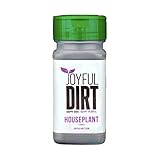 | Joyful Dirt Aliments et engrais concentrés de qualité supérieure pour plantes d'intérieur. Shaker facile à utiliser (3 oz) | PrimeAdmissible | Vérifier le prix sur Amazon |
 | Nourriture pour plantes d'intérieur | Engrais tout usage pour plantes d'intérieur | Engrais liquides pour plantes d'intérieur pour sol de plantation en pot | par Arts aquatiques | PrimeAdmissible | Vérifier le prix sur Amazon |
Grow Bag Pros
As we explained above, there are many reasons gardeners should use grow bags more often. Here are some of the most important reasons:
Meilleur échange d'air
One thing that makes grow bags great is that they’re made of pressed fabrics that have tiny holes, allowing for more air circulation, thus more water and nutrient absorption.
Self-Pruning
In grow bags, plants are more encouraged to self-prune. Once the plant’s root reaches an air pocket, it’ll prune the root automatically, making a side bud. As a result, the plant develops a strong root system allowing for root hair to cover a greater area.
As a matter of fact, you can even break up the plant’s root system when transplanting it from a conventional container into a grow bag, and that’ll actually promote growth! Fragile and delicate plants can have broken-up roots, so carefully choose the plants which can handle this process more.
Plantation de compagnon
Flowers are essential for pollinator insects. Attracting pollinators requires large groups and a variety of species. When specific plant species are combined, they attract these insects and protect one another by keeping the soil moist and pests away.
Grow bags contain a small ecosystem; there are complex soil microbes and root systems that encourage the growth of each plant.
Watering is Easier
With fabric grow bags, you don’t have to worry much about overwatering your plants, as little holes in the pressed fabric make it easier for excess water to come out.
Durability And Mobility
Whether your garden is indoors or outdoors, small or big, you won’t have a big issue using grow bags. You can easily move them around since they’re made of fabric and are lighter than regular pots.
The fabric of grow bags isn’t woven but pressed together, allowing for much more durability. You can cut the bag without damaging its structure, which can even allow the plants to grow out of the bag’s sides, as well as the top.
You Can Make A Vertical Grow System
Vertical grow bags, if set up well, can be key to establishing a garden system rich in all kinds of beneficial nutrients. In fact, more than one of these bags can be stacked or suspended above one another, allowing for a great watering system.
All you need to do is water the one at the top, and it’ll drain the water to the one under it, and so on until the entire garden system has been irrigated. This can be done either with pipes or manually.
Plant Roots Become Healthier
Grow bags prevent the occurrence of root bounding. Instead, as mentioned above, the roots are burnt off as they reach the grow bag’s wall, causing the plant to develop new, healthy roots. This is referred to as “air-pruning.”
The roots of the plants in pots tend to grow in circles, causing entanglements. This raises the risk of water stagnation or oxygenation problems, especially in bigger pots with poor drainage. As a result, roots become constricted, causing a reduction in water and nutrient absorption. Your plant’s stem will also get crushed, causing tissue damage and further nutrition restriction. At that point, the plants are aware that they have hit their growth limit.
With fabric grow bags, on the other hand, as the roots meet the bag’s edges, they feel the drier exposed soil, and they automatically get air-pruned. This prevents the roots from growing too much and eventually girdling.
Regulate Temperature
Because plastic pots aren’t breathable, the direct summer heat can make plastic pots quite hot. Grow Bags, on the other hand, are breathable and regulate temperature more easily by allowing any extra heat to leave the bag from any direction.
Easy Storage
When pots aren’t in use, storing them isn’t the easiest thing in the world. They end up as empty eyesores stacked in a hangar somewhere during the offseason, while you hope that they don’t break or get damaged.
However, you can easily fold up and store grow bags each offseason without them taking up too much space.
Grow Bag Cons
Though grow bags can be a practical alternative to other ways of planting, we still see a couple of disadvantages of using them:
Ravageurs
Expect to face pests like worms, aphids, and mites.. A good solution to that, though, is earthworm castings, which you can mix into the soil.
Pas très durable
While pots can last years or even a lifetime, fabric bags don’t. So you’ll need to replace them every two or three growing seasons.
Can Be Costly
A single grow bag won’t cost you that much, but since you need to replace them often, the cost of many grow bags can definitely accumulate over months or years, adding up to a pretty large sum.
Can Look Unattractive
Grow bags come in gray, brown, or black colors. They’re sack-like and don’t look as decorative as hard pots do. An alternative to black grow bags are Wraxly Premium Two-Tone Fabric Grow Bags, which come in a variety of colorful fabrics and are extra durable and long lasting.
Can be Quite Heavy
A great advantage of grow bags is mobility. However, grow bags that weigh more than 25 pounds can be really hard to move around. So, you’re going to need to plan an initial, potentially permanent, place to make things easier.
Dry Out Quickly
It’s true that grow bags reduce the risk of overwatering, but you’re still at risk of under-watering your plants as there’s enough air circulation to cause the soil to dry out quickly.
That concludes our comprehensive guide on grow bags. If this inspired you to start your own grow-bag garden, go ahead and get your own grow bag, and you already know how to get started!
Vous pourriez également être intéressé par…
Les plus grosses erreurs que vous pouvez faire lors de la culture de tomates

Darrell a une passion pour le jardinage qu'il a héritée de son père. Aller ici pour en savoir plus sur l'influence que son père a joué dans son amour pour le jardinage. Si vous souhaitez envoyer un message rapide à Darrell, rendez-vous sur sa page de contact ici.
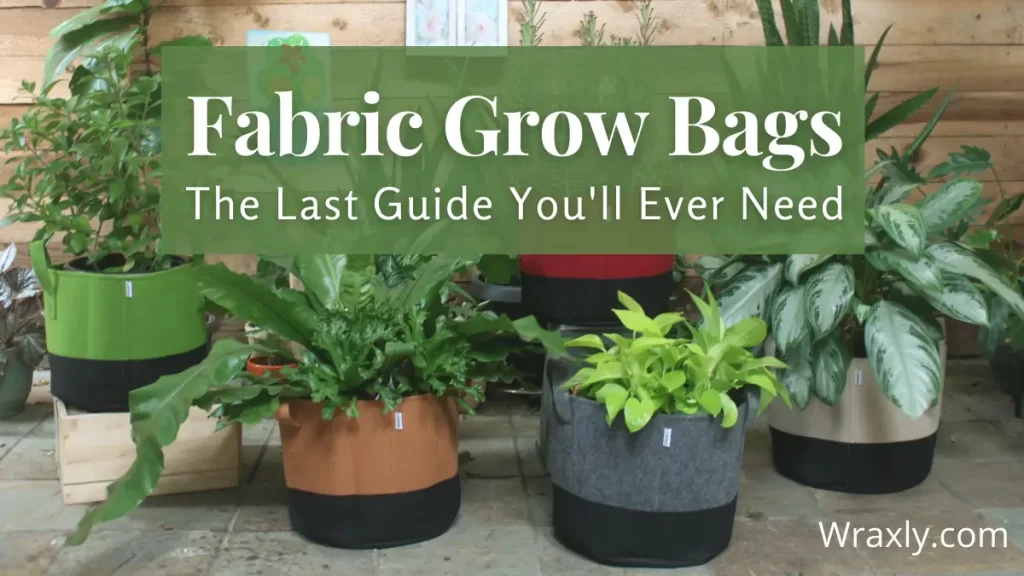
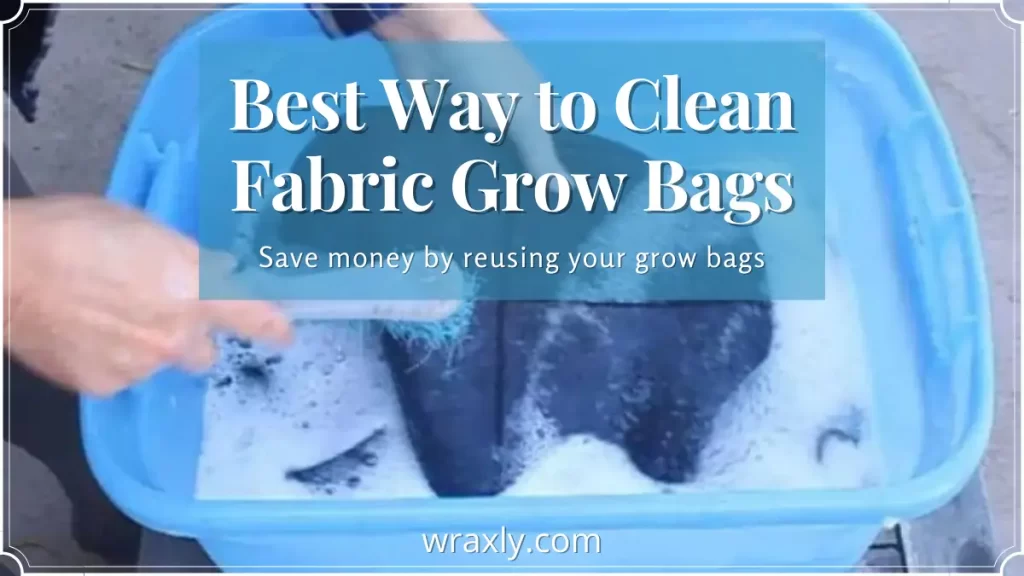
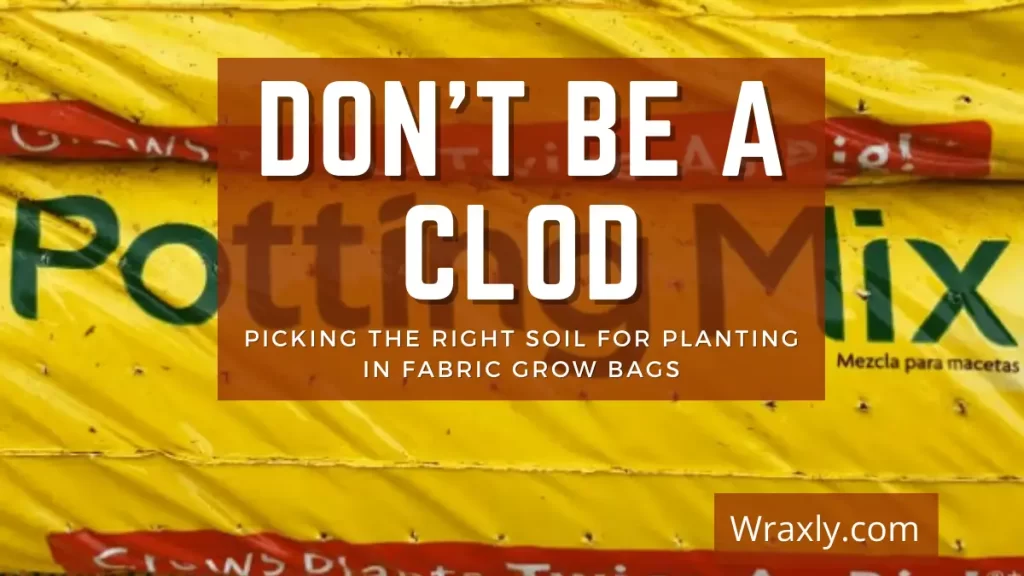
![Jardinage en conteneurs pour débutants [Guide d'achat]](https://wraxly.com/wp-content/uploads/2021/02/Container-gardening-for-beginners-Buying-guide-1200-1024x576.webp)